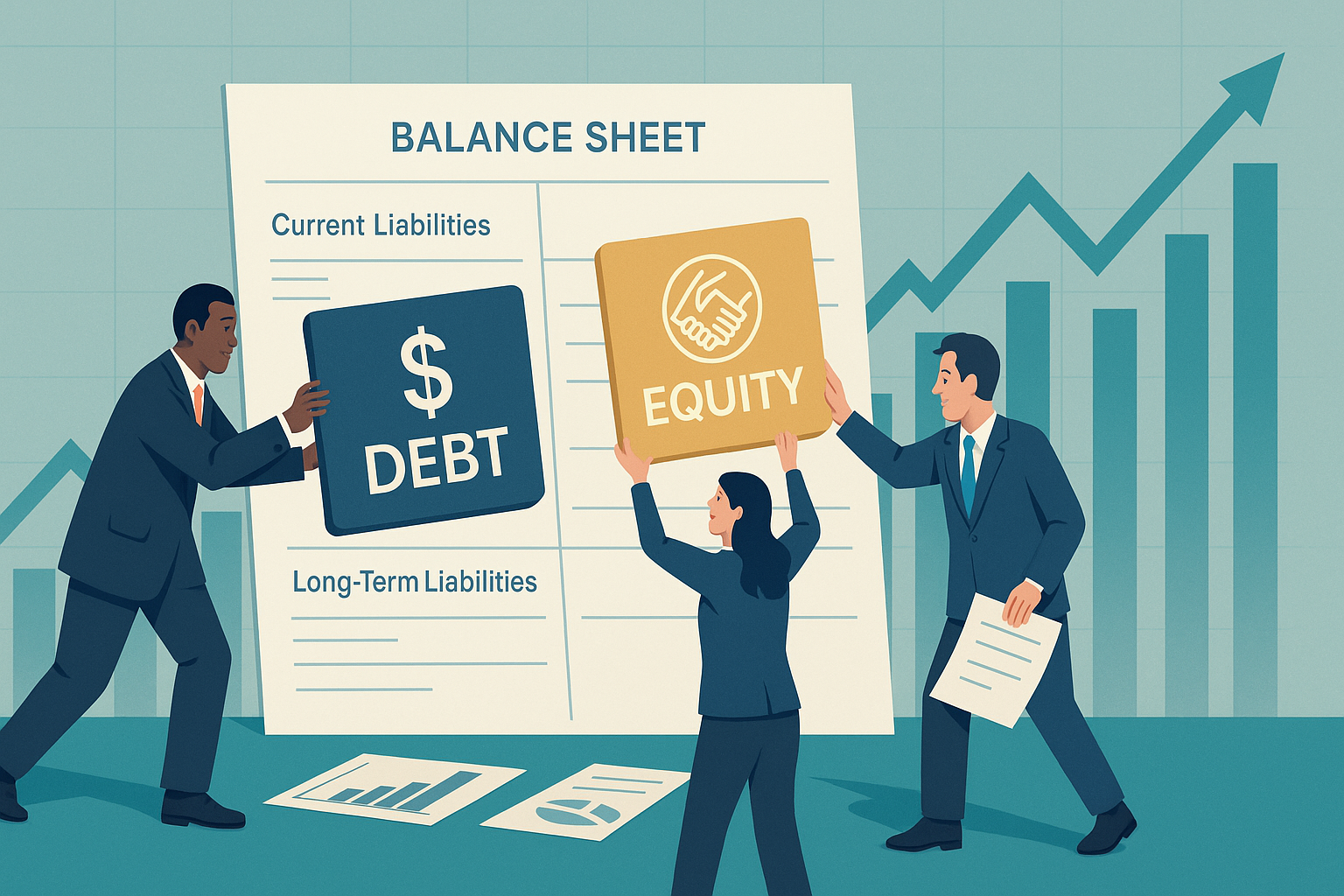1 (800) 584-0324
With rising interest rates, global uncertainty, and tightening bank credit, corporate debt restructuring has become a vital tool for companies navigating 2025. Restructuring allows businesses to renegotiate debt terms, optimize balance sheets, and secure liquidity while avoiding distress.
For CFOs, business owners, and M&A advisors, mastering these strategies can mean the difference between survival and renewed growth. Agile Solutions specializes in helping companies evaluate liabilities, engage lenders, and design structures that improve long-term stability.
Here are five smart corporate debt restructuring strategies for 2025.
1. Refinancing at Better Terms
One of the most common approaches to corporate debt restructuring is refinancing existing obligations. Companies can:
- Replace high-interest loans with lower-cost alternatives
- Extend repayment terms to reduce short-term pressure
- Consolidate multiple loans into a streamlined structure
Even with cautious bank lending, private credit and alternative lenders offer refinancing opportunities that improve liquidity.
2. Extending Maturities and Amortization Schedules
Extending maturities allows businesses to spread payments over a longer timeline, reducing near-term cash burdens. Amortization adjustments can create breathing room for operations and investments.
This strategy is especially relevant for industries facing cyclical revenue pressures, such as manufacturing, retail, or energy.
3. Debt-for-Equity Swaps
In some cases, creditors may agree to exchange part of their debt for equity in the company. This reduces liabilities while giving lenders a stake in long-term success.
Though it dilutes ownership, a debt-for-equity swap can preserve business continuity and attract new capital partners. Agile Solutions helps structure these swaps to balance creditor demands with shareholder value.
4. Liability Management and Covenant Relief
Debt covenants often restrict borrowing, acquisitions, or capital expenditures. When performance falls short, businesses risk breaching agreements.
Negotiating covenant relief or liability management transactions—such as buybacks or consent solicitations—can help companies maintain compliance and avoid default.
5. Pre-Packaged Bankruptcies and Restructuring Plans
For distressed companies, a pre-packaged restructuring plan can provide an orderly process to renegotiate with creditors while minimizing disruption.
This doesn’t always mean liquidation—many businesses emerge stronger with reduced debt and renewed investor confidence. Agile Solutions supports companies in evaluating options before formal insolvency proceedings are necessary.
Seasonal Outlook for 2025
As debt maturities rise and refinancing costs increase, corporate debt restructuring will remain a priority for businesses throughout 2025. Companies that act early—proactively engaging creditors and exploring private credit alternatives—will avoid crises and position themselves for future growth.
Reference Summary
Need to explore corporate debt restructuring options for your business? Agile Solutions helps companies across the U.S. and Canada renegotiate debt, unlock capital, and design sustainable financing solutions.
👉 Book a consultation today at agilesolutions.global or email us at info@agilesolutions.global
#DebtRestructuring #CorporateFinance #LiabilityManagement #BusinessGrowth #CapitalMarkets #AgileSolutions



